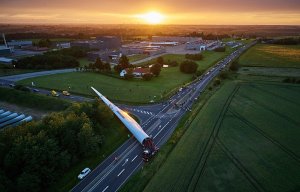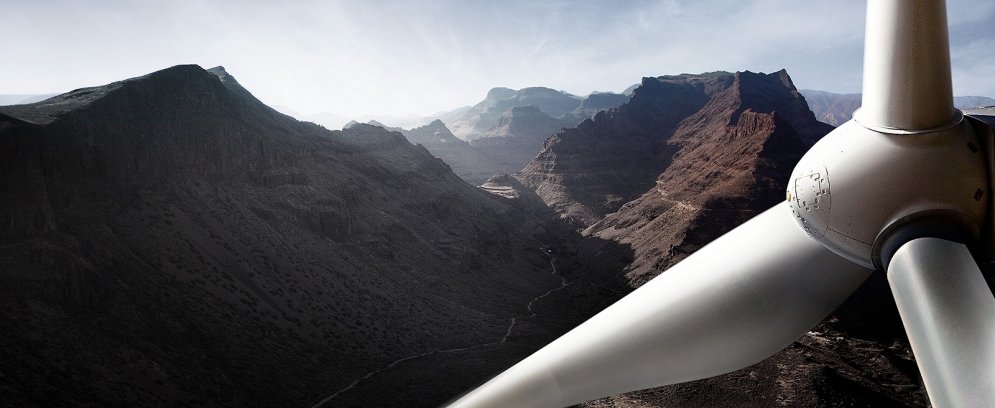
GE completes acquisition of LM Wind Power
Opinion


Blade-to-blade recycling is the objective, but the composites industry must pool resources, JEC World 2024 panel agree.

15th March 2024
Adrian Wilson
|
Paris
Introducing an expert panel on composite blades for the wind energy market at JEC World in Paris on March 7th, Alexander Vendenberghe of Brussels-based industry association WindEurope reported that there is now 272 gigawatts of installed wind energy in Europe, capable of meeting 19% of the continent’s overall energy needs.
There was also a record number of new installations within the EU27 in 2023, amounting to 60GW of additional supply.
“It’s a record, but we will still need to see double that going in every year going forward, to meet renewable energy targets,” Vendenberghe said. “Looking at planned orders, however, it’s something that is achievable. At the same time, around 750 megawatts of turbines reached the end of life last year, which is not yet a lot, but this will also increase every year. Our dual challenge now is to work out how to start recycling what was installed thirty years ago and what will happen in thirty years’ time. How can we ensure there are circular options for the future?”

Stiffness-to-mass
Vestas Wind Systems is a leading European manufacturer of wind turbines headquartered in Denmark, with sales of €15.4 billion in 2023 and approaching 30,000 employees globally.
The company’s head of advanced structures and sustainability Allan Poulson said composites were incomparable in terms of the stiffness-to-mass ratio they provided in wind blades and Vestas is now producing them in lengths of up to 115.5 metres, with a weight of 60 tons.
At JEC World there were also reports of blades now being produced in China up to 136 metres long.
Poulson said the incorporation of carbon fibres in combination with glass fibre was essential at such lengths, while Tom Wassenberg of leading glass fibre manufacturer OwensCorning said his company was constantly working on new higher modulus glass fibre types in order to further benefit from the general high performance-to-cost ratio that glass fibres provide.
Wassenberg added that the resmelting of glass from waste composites is a very sensitive operation which OwensCorning is now achieving with its own waste from operations, but the take back from end-of-life glass composites presented specific problems related to guaranteeing the quality and consistency of the feedstocks. Nevertheless, the company is now planning to dedicate a portion of one of its industrial furnaces to materials taken back from its customers.
Landfill ban
Mathieu Cariou, corporate development director of the Swiss-headquartered composites manufacturer Gurit, observed that a ban on composites waste from landfill in Europe had opened the industry’s eyes to the coming need for taking responsibility for its waste.
“The business case is there but we need the assistance of governments and legislation to help us,” he said. “It’s a question of whether this is carrot or stick. Transportation is expensive and recycling energy intensive, so regional supply chains need to be established.”
Guillaume Cledat of Paris-headquartered Arkema said his company had a vision for tackling recycling involving the next generation thermoplastic resins that would better provide the opportunity to establish mechanical recycling.
At JEC World, Arkema announced the first aeronautical structure made of thermoplastic composites in the HAICoPAS project. The aerospace-grade materials are being realised with Arkema’s Kepstan PEKK (polyether-ketone-ketone) resins.
Pooling resources
For Peter Windmoeller, senior sales manager for Düsseldorf-headquartered plant engineering company Loesche, which has pioneered mechanical glass composite recycling with its Rocket Mill technology, the combination of carbon and glass fibres in wind blades will create a further problem.
“The volume of waste will not be the major issue but the separation of clean glass and carbon fibres will be a big challenge going forward,” he said.
There was general agreement from the panel with the observation by Leif Ole Meyer, senior technical service and development manager at epoxy resins producer Olin, that there is a real need to improve the collection and pooling of composite waste across all sectors in order to help the recycling industry and create a use case for recovered materials.
“In trying to create a recycling value chain we need to move outside the wind industry,” said Vesta’s Poulson. “Yes, there is a lot of regeneration potential in these large blades, but much more potential material can also come from the aerospace, automotive and electrical industries. There’s a need to merge waste from separate industry supply chains to achieve critical mass, but at the moment it’s an issue that’s still too easy for companies to duck out of.”

Business intelligence for the fibre, textiles and apparel industries: technologies, innovations, markets, investments, trade policy, sourcing, strategy...
Find out more